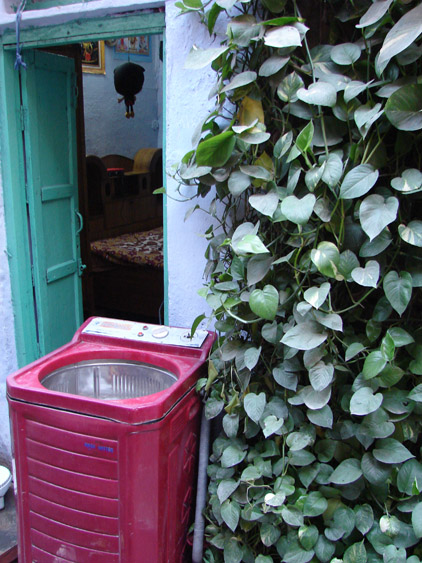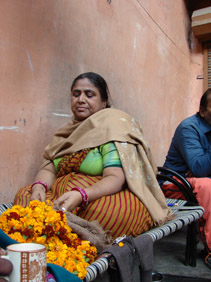This is an old revision of the document!
Table of Contents
Permaculture
The Book
Discussions/thoughts/case studies
An imaginative text based on contemporary travel through the 'forests' by SARAI associate fellow Debkamal Ganguly » http://www.sarai.net/fellowships/associate/debkamal-ganguly
Highlights
- The link between forest/ecology destruction / urbanism and phenomenology of trains
- Leper colony, Santhal tribal woman
- Time and space continuum( numbers , age )the sense of ‘’loss’’ of self in sexual congress, reaching a new continuum
- Urban forests… urban jungle,Garbage Space and Garbage time
- A mental forest
- Can urban life and wilderness co-exist
- Is the loss of wild an indispensable cost of development,of urban wilderness?
- Soil as a unifying factor, just as the sky
- Menstrual cycles and primitive tribal woman
“Community Ecological Mapping” by Nilanjan Bhattacharya, Kolkata » http://www.sarai.net/fellowships/independent/abstracts/03-04/page-3/?searchterm=Nilanjan%20Bhattacharya
The eastward expansion of the city is causing the fast transformation of the semi rural and rural landscape into highly urban settlements in the eastern fringe of Calcutta. Kalikapur, a densely populated locality inhabited mostly by the people from poorer economic strata, a unique ecosystem with very rich mosaic of original vegetation, with groves of indigenous trees and bushes, swamps with reeds, and number of water bodies, has strangely survived the onslaught and now remains as a refuge threatened by the fast approaching urban expansion. A considerable number of Kalikapur residents have significant dependence on the local wilderness for their dietary supplements, fuel and fodder. They, and particularly their children, are quite knowledgeable about these available, 'free' resources, in the locality and also in adjacent urban settlements. The proposed research is aimed to study such unique practice of resource use, sharing, and indigenous knowledge, in a framework of urban-semi-urban ecosystem. An outline ecological mapping along with the ethnographic history of Kalikapur region is being planned. The project also plans to document the process of urban transformation.
A small group comprises of knowledgeable kids from Kalikapur, and kids from the adjacent urban locality, who have operational computer knowledge, would be formed. Kalikapur kids will work as field guides and the urban ones will take charge of the documentation (paper, photographs, computer storage) mainly. A participatory bio-resource documentation, and exchange of knowledge and skill between these two groups would be actively initiated.
- Plant tiles on page 3 http://www.csie.ntu.edu.tw/announce/news/94B/20060607.pdf
Visit to Chandani-Chowk
moonlight junction…. one of the most dense places on the planet… absolute and complete sense of chaos… people shouting, screaming and jostling … every third step a group of people is eating … visit to the 15th century haveli… peepal tree… religious significance… the tree vs the built form… growing forms vs static rigid forms… why can't our buildings… or built habitats grow… and cooperate with the trees they stand next to … why can't the built mass be built with materials and systems which when fed with water, electricity, time, maintainence, human occupation etc begins to respond and live… how does our body function… much like the way a plant functions i guess… there is something to discuss here…
i walk down the street to see more informal courtyards and smaller, personal touches of green… in front of the temple… the small jamun tree in the court yard… tulsi and kadi patta… gainda flowers… the lady who loves her money plants so much that her daughter in law has also had to fall in love with them and is seeing them as a source of joy, peace, fortune, health …
there is just too much fiesty talk and discourse all around… people are brain numb and driven into giving up their interests… awareness is at its bottom most level… it is like a crowd of cows being fed heavily before being butchered… chipko movement… blank noise… silence… tree and plants are mute and remain so… french animation where humans and their greed makes them pigs eventually resulting in their death… not death… death is beautiful… it is immortal since nothing changes once you reach it … you don't get old, you do not change…. through death one goes beyond the idea of death… Mrityunjay…
visit to the jain temple… beautiful ambience… one thing which remains in my mind was a statement from the priest … the jain monks are like grazing cattle… they never take too much from one place or person… they take small amounts and then move onto the next spot…
today i see trees only in areas where they have been given explicit permission to exist… schools, institutions, military campus, temples and parks. They seem to have had it real tough recently … especially with so many illegal migrants in Delhi… now migrants do have a choice.. they can give a reasonable bribe to enjoy the wonderful opportunities Delhi has to offer… but our specie never got around to developing a system of monetary benefits. We need some gigantic leaps in economics i feel.
EUROPE :: ASIA/India
- There seem to be numerous contextual divides between European and Asian backdrops and settings :soil conditions, native plants, traditional knowledge, type of relationship, role in daily life_religion/festival, macro and micro context, overall seriousness of the problem, opportunity and public perception/awareness, growth index of the city and so on
- At one level, we have approaches and techniques like seedballing moss graffiti psychogeography which happens in a bottom up way … often fragmented till it reaches a tipping point !! This is in my opinion is a great way to approach numerous cities in Europe where the awareness is high and
creating greensis high on public agenda… however, in India especially with my analysis of Delhi the situation is very different… cities in India are very well served by the produce from rural areas within and without the city… including urban villages… the service is not just agro-produce but moves over to dairy products etc.
- Agriculture in urban India is a means of sustenance and earning money… done by the poor/migrant communities. With the emphasis on rural agriculture in India, the positive contribution that production closer to the cities can make has hardly been acknowledged and is still not acknowledged because of the shocking pace at which cities are growing. The sheer apathy of people is palpable and i have made a note of this in the second article which i have sent you. In the Indian context as in much of the rapidly developing world , a shift has to happen at a market/commercial level or a public policy level much like in Cuba. The cities have such momentum in terms of
growthand infrastructure development, that we might need to propose a product which people can buy off the shelf and use in their growth ! So the question is what are the growth symbols in urban areas… or more like growth patterns_ i can see construction as an area which needs attention and so is the automobile industry
- We have an opportunity here… to design
somethingwhich will directly impact the situation… related to real estate, construction, mass production, modular systems, automobile design and architecture: something which softens thecorporate sheenwhich cities have come to symbolise and at a scale which can become ubiquitous _ ubiquitous planting !! How can we do this ? I heard that every year the planet adds 73 million humans to its tally !! Can we do something close for plants ? Can we add 73 trillion plants every year ? I think we can :)
If you see the link above, one sees the shocking numbers we are against_ 17 million humans born every year and if you scroll down you will see the rapid and frenetic pace at which forests are being depleted and the top soil eroded.
We need to strike at the heart of this problem. To have ubiquitous planting i propose we create a series of green tiles which can be used in a modular manner in the construction and automobile industry. _ a green brick_ a brick which breathes and lives like a plant_ you could call it a plant tile too… but a properly designed intelligent green organic modular brick which can have a range of plants/seeds which can be incorporated in it based on the city/geographic location it is being used in… like any other modular brick ( for example a hollow concrete block ) this would find direct use in the construction industry … go with curtain walls/acoustic panels/aluminium sections … in the process it would be like a green virus… creating massive/architectural green facades… not just facades which incorporate plants into them which is now seen often as bio climatic walls … but the facade itself would be like one majestic green skin… made up of a thousand green tiles … a city would be associated with these green tiles and the specific plants they give life to… i see around scores of barren concrete walls in cities like Dubai, Brussels, New York and so on……
A modification of this brick could go on and be integrated with the design/manufacture of automobiles…
All this to say that, we will not step back, or we just can not cut back on the scale and pace of growth in urban realms but we can feed life and fertility into that growth and make it a green growth


